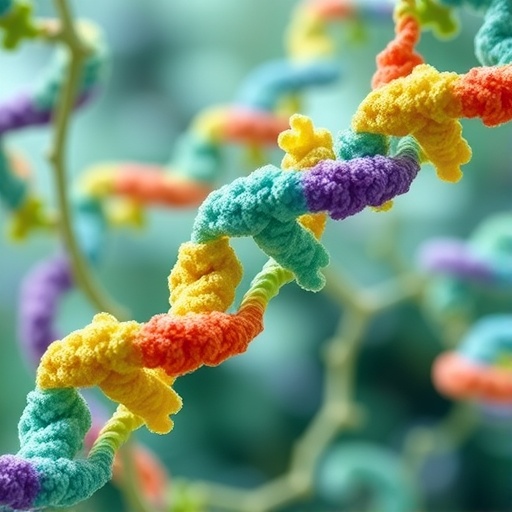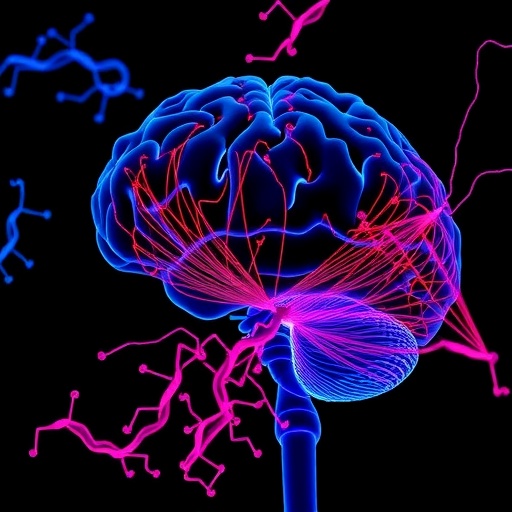Natural products, with their intricate structural and stereochemical nuances, are pivotal in the realm of drug discovery. Their unique scaffold structures often serve as the foundation for therapeutic agents, yet the complexity inherent in their stereochemistry frequently surpasses the capabilities of traditional synthetic chemistry. This disparity has led researchers to explore innovative methodologies that can bridge the gap between nature’s ingenuity and synthetic chemists’ aspirations. A recent notable strategy that has garnered attention is genome mining, which enables scientists to excavate cryptic biosynthetic gene clusters and enzymes capable of yielding compounds with remarkable stereochemical properties.
The advent of genome mining has revolutionized our approach to identifying enzymes with noncanonical activities. Enzymes are biological catalysts, and their ability to perform specific transformations with high efficiency and selectivity is incredibly valuable in biomedical applications. Recent studies have unveiled a plethora of enzymes that exhibit unusual stereoselectivities—these findings are not merely academic; they have the potential to significantly impact the development of new chiral molecules. Chiral compounds are essential in pharmaceuticals because the orientation of atoms within a molecule can drastically alter its biological activity and behavior.
Enzymatic reactions are often characterized by their stereoselectivity, which refers to the preference of an enzyme to convert substrates into a specific stereoisomer. A growing body of comparative analyses indicates that even minor variations in enzyme sequences and the environmental conditions of their active sites can lead to a wide array of stereochemical outcomes. This variability underpins the fascinating complexity that biocatalysis offers, allowing chemists to access novel chiral entities that might otherwise remain beyond reach through conventional synthetic methods.
As researchers delve deeper into the mechanistic pathways of these stereodivergent enzymes, it becomes apparent that their unique strategies for catalysis not only broaden the toolkit available to synthetic chemists but also enhance our overall understanding of stereochemical control. Enzymes can flexibly interact with a diverse range of substrates, thereby expanding their utility in synthesizing complex molecules. This transformative potential has led to a concerted effort within the scientific community to map out the functionalities of these enzymes in finer detail.
Specific examples highlight the breadth of substrate scope achievable by these stereodivergent enzymes. For instance, enzymes discovered through genome mining show remarkable versatility in their ability to process both achiral and chiral substrates, facilitating the generation of products with distinguished stereochemical markers. This trait is particularly advantageous in pharmaceutical synthesis, where the production of a single stereoisomer is often crucial for maximizing therapeutic efficacy and minimizing adverse effects.
Furthermore, the catalytic mechanisms employed by these stereodivergent enzymes merit careful examination. By elucidating the biochemical pathways through which these enzymes operate, researchers can gain insights into the underlying principles guiding stereoselectivity in enzymatic reactions. Understanding these mechanisms involves a combination of structural biology, computational modeling, and kinetic analysis, ultimately contributing to a comprehensive picture of how enzymes achieve their remarkable specificity and efficiency.
The implications of advancements in genome mining and enzyme discovery resonate across various scientific disciplines, including medicinal chemistry, pharmacology, and synthetic biology. These breakthroughs not only facilitate the exploration of previously uncharted chemical space but also provide a roadmap for the rational engineering of enzymes. Through targeted modifications, it becomes possible to tailor enzymes to possess desired characteristics, enhancing their applicability in industrial processes and therapeutic developments.
Moreover, the insights gained from studying stereodivergent enzymes offer promising avenues for the future of biocatalysis. With the continuing advancement of genome sequencing technologies and bioinformatics tools, researchers are better equipped than ever to identify and characterize new enzymes that can drive the synthesis of complex chiral molecules. As we push the boundaries of what is possible in synthetic organic chemistry, the role of biocatalysts underscores the importance of interdisciplinary collaboration in addressing global challenges in health and sustainability.
In exploring the potential of these enzymes, collaboration within the scientific community is essential. Sharing knowledge across subfields allows for the synthesis of diverse perspectives and fosters innovation. The integration of structural bioinformatics, synthetic chemistry, and enzymology can yield powerful synergies that enrich our understanding of enzyme function and optimize biocatalytic processes.
The future of drug discovery is likely to be significantly shaped by these advances in enzyme engineering. As researchers persist in uncovering the hidden treasures of nature through genome mining, the promise of discovering novel enzymes capable of catalyzing stereodivergent transformations becomes increasingly tangible. This quest not only pushes the frontier of chemical synthesis but also holds the key to developing novel therapeutic candidates that can better meet the diverse needs of patients worldwide.
In conclusion, the study of stereodivergent enzymes discovered through genome-mining initiatives stands at the forefront of modern biocatalysis. Their remarkable ability to perform stereochemically complex transformations opens doors to new avenues in drug design and production while enhancing our comprehension of molecular interactions on a fundamental level. This ongoing research, which deftly merges computational and experimental techniques, exemplifies the dynamic interplay between nature’s inherent capabilities and human ingenuity in the pursuit of next-generation biocatalysts.
As we advance to an era characterized by precision medicine and bespoke pharmaceutical solutions, the role of stereodivergent enzymes will undoubtedly become more prominent. These enzymes represent not just the potential to revolutionize drug manufacturing but also to respond flexibly to the evolving landscape of medical science, paving the way for breakthroughs beneficial to humanity.
Every discovery offers new questions and challenges, compelling scientists to explore deeper to unravel the complexities of life at the molecular level. The journey into the world of genome mining and enzyme catalysis continues, illuminating pathways that promise to redefine our understanding and approach to drug development, ultimately improving health outcomes across the globe.
Subject of Research: Enzymes catalyzing stereodivergent transformations through genome mining.
Article Title: Genome mining-driven discovery of enzymes catalyzing stereodivergent transformations.
Article References:
Yu, J., Ushimaru, R. Genome mining-driven discovery of enzymes catalyzing stereodivergent transformations. J Antibiot (2025). https://doi.org/10.1038/s41429-025-00881-0
Image Credits: AI Generated
DOI: 20 November 2025
Keywords: Enzyme discovery, genome mining, stereodivergent transformations, drug synthesis, biocatalysis.
Tags: biomedical applications of enzymesbiosynthetic gene clusterschiral molecule developmentenzymatic reactions and stereoselectivityenzyme discoverygenome mining techniquesinnovative methodologies in chemistrynatural product synthesisnoncanonical enzyme activitiesstereochemical properties in drug discoverystructural complexity in pharmaceuticalstherapeutic agent scaffolds





